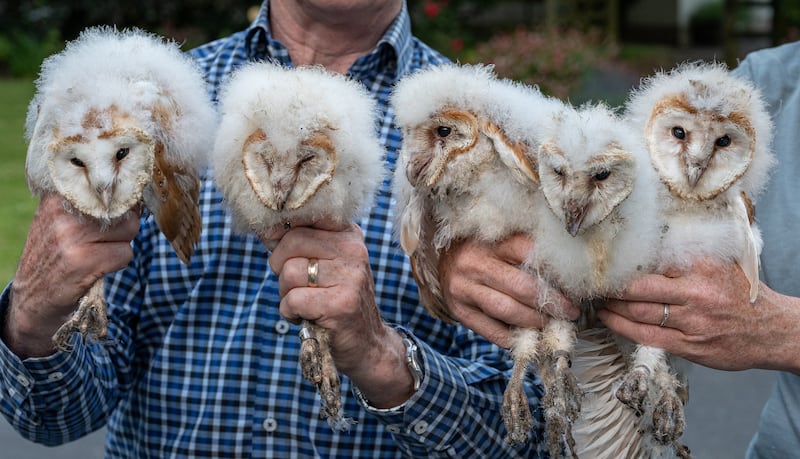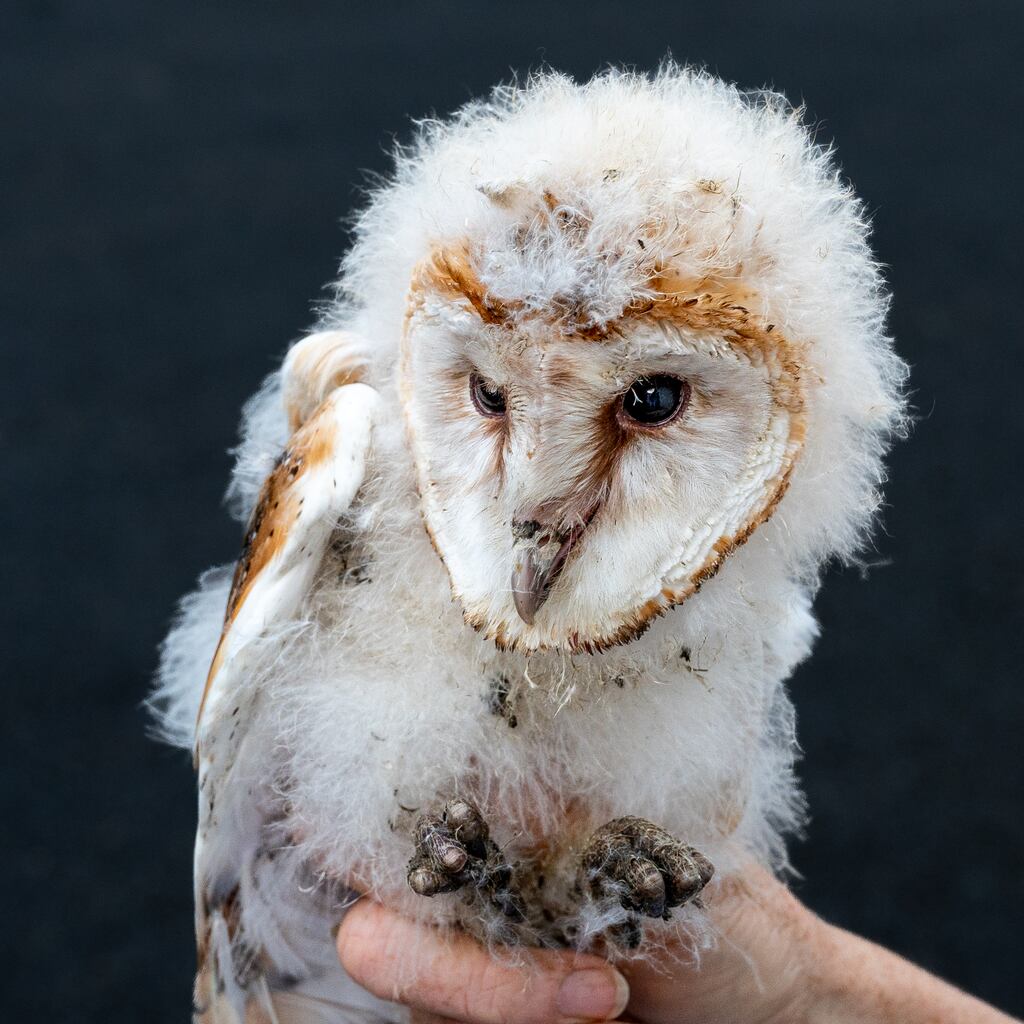Back in 2002, Pat Sheridan was fed up. He was laying rodenticide around his Westmeath farm to control rats and mice, but it was a repetitive, costly task that barely kept them at bay.
He had read about barn owls and their voracious appetite for vermin, so he turned his back on poison and built an artificial barn owl nest box instead, and put it up in his shed. And then, he waited.
Pat was ahead of his time. Back then, there were very few nest boxes around. An exception was in the small village of Holy Cross, Tipperary, where pupils from Ballycahill National School had, in 1993, become so enamoured of this bird that they posted a letter to “Barry’s Tea, Cork” and asked them to send up six wooden tea chests. The chests arrived and were adapted into nest boxes which were erected in barns around the local area.
At that time, barn owl numbers had been in decline for decades. It was a change from the past when they used to patrol St Stephen’s Green in Dublin and nest in nearby St Patrick’s Cathedral. But from the 1970s, they were under pressure from the intensification of farming, which caused two problems: the hedgerows were pulled out, and the small mammals, which owls feed on, had nowhere to live; and the increasing use of rodenticides to manage rats caused secondary poisoning in the owls.
READ MORE
Outside farming, the ever-expanding road network has proven fatal, and nearly two-thirds of all recorded deaths of barn owls are roadkill.
Last week, Pat saw a skylark singing above his land for the first time in four decades
But things are looking up, and in the past decade, there’s been a 500 per cent increase in breeding pairs in west Offaly and east Galway as they move northwards and eastward from their traditional strongholds of Cork and Kerry. Numbers are also up in midland counties such as Westmeath, where their breeding range has increased by 128 per cent in the same period.
This season has been the most successful in 15 years. Last month, a record-breaking seven chicks successfully hatched in an old stone loft on a suckler farm near Dundrum, Tipperary. The farmer first noticed owls in the building a few years ago while helping a cow to calf, and contacted Birdwatch Ireland volunteer Aine Lynch, who added his farm to the burgeoning list of successful breeding sites nationwide. There are now more than 300 artificial nest boxes across Ireland.
Barn Owls feed on our native Field Mouse and Pygmy Shrew, but the arrival of the Bank Vole in the 1920s and the Greater White-toothed Shrew in 2006 have helped no end. The White-toothed Shrew is particularly big and noisy – an easy catch for these supreme hunters – but small nocturnal mammals have excellent hearing, so it makes sense that Barn Owls are built for silence. Minuscule serrations on the edges of their flight feathers break up the air and dampen the sound as they fly, which means that Barn Owls can float noiselessly along hedgerows, listening for the scuttle of mice, shrews and voles. Their eyes are packed with rod cells that gather light more efficiently at night, so they can scour the ground for movement.
And yet, Barn Owls live a precarious life and are only a few hungry days away from being emaciated. During the breeding seasons, adults will bring back about 28 prey items for their chicks, but if the small mammals aren’t there or the weather is wet (Barn Owl feathers aren’t waterproof and quickly become sodden in the rain), they will rapidly starve.
Successive nights of rain are a real problem. How will Barn Owls manage in the face of unpredictable, extreme climate events, such as a deluge of wind and rain? We don’t know, but Ireland’s foremost expert on Barn Owls, Dr John Lusby, is working with colleagues in Norway to understand how rainfall shapes their ability to successfully breed. As climate change takes hold, we’d do well to do everything possible to boost their numbers.

Farmers have long known the value of Barn Owls in hoovering up vermin. In the past, tillage farmers built an ‘owl window’ above the door of stonewalled grain stores so they’d stay nearby and eat the mice and rats. These days, farmers are given public money to upgrade modern buildings, and a simple design spec that would include nesting spaces for barn owls, as a condition of receiving these grants, would bring into the fold tens of thousands of farmers who chose not to be part of agri-environmental schemes.
The kids at Ballycahill School waited two years for barn owls to breed in their converted tea chests. Thirty years on, one chest is still occupied. The school principal, Tom Gallagher, has since retired and now spends his time enthusing local farmers about what he has learned on his own farm: to attract barn owls, you have to take an ecological approach to managing the land. Hedgerows – effectively, mini strips of woodland – must be allowed fruit and flower to provide enough seeds, berries and insects for mice, voles and shrews to flourish.
Barn owl numbers had been in decline for decades. It was a change from the past when they used to patrol St Stephen’s Green in Dublin and nest in nearby St Patrick’s Cathedral
This means that barn owls will be well-fed and watered (they don’t drink water but rely on the blood of their prey for moisture). Tom has shared his knowledge in an informative barn owl leaflet, available from tippbarnowlproject@gmail.com.
Pat Sheridan waited and waited for the barn owls to appear. He planted trees and let his hedgerows grow and then – after 18 years – a pair of adults arrived in his nest box. Today, they’re doing a good job keeping his farm vermin-free, and their presence shows that the insects and small mammals are doing all right. Last week, Pat saw a skylark singing above his land for the first time in four decades. In our ever-heating world, when it can be hard to feel hopeful, farming with barn owls in mind can reap the rewards.


















